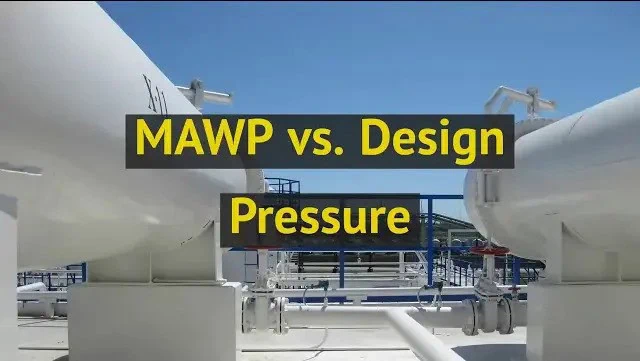Maximum allowable working pressure (MAWP) is an American Society of Mechanical Engineers (ASME) designation that establishes the rating for pressure-relief components on vessels. It measures the greatest amount of pressure that the weakest part of the vessel can handle at specific operating temperatures. Industrial facilities use a vessel’s MAWP to establish safety protocols and prevent explosions by ensuring the system never exceeds safe operating pressures.
At Thermal Fluid Systems, we supply complete thermal fluid and hot oil heater systems. All of our thermal fluid heaters are designed to handle a MAWP of 150 psi by default, but other MAWPs are available upon request. Additionally, every system also complies with all ASME safety standards. Here are some basics on MAWP vs design pressure and how these two important areas intersect.
MAWP vs. Design Pressure
Whereas a vessel’s MAWP is the highest level of pressure it could be exposed to, the design pressure is the highest level of pressure it should be exposed to in normal operating conditions. The design pressure establishes the highest acceptable pressure of a pressurized system, and it is generally lower than or equal to the MAWP of the system’s vessel. While the MAWP is calculated based on the physical limitations of the vessel’s weakest part, a system’s design pressure is based on the type of pressure system employed.
The vessel’s or system’s relief valve is set to the design pressure to minimize the risk of damage or explosions. Generally, the design pressure incorporates a margin of 10-25% above general operational pressures to allow for unexpected surges. This additional buffer further reduces the risk of explosions failure.
MAWPs also differ from design pressure as the former characteristic changes throughout the vessel’s lifetime. Wear, use, and corrosion of carbon steel elements gradually weaken a vessel, lowering the vessel’s MAWP. While MAWPs are printed on their vessels so facility managers can match the parts to the right system, it’s important to take the vessel’s age and wear into consideration.
What Are the Keys To Calculating MAWP?
The American Society for Mechanical Engineers establishes the standards for the design and construction of pressure-rated vessels, including acceptable MAWPs. Their established formula for calculating a vessel’s design pressure vs MAWP is as follows:
P = (TS x t x E)/(R x SF)
P = Maximum allowable working pressure
TS = tensile strength of the material in the weakest part of the vessel (in psi)
t = the vessel’s wall thickness (in inches)
E = the longitudinal seam efficiency, or efficiency of the weld based on a set rating (no unit)
R = the interior radius of the vessel (in inches)
SF = the safety factor (no unit)
Before calculating for MAWP, process engineers need to determine the size, shape, and required psi of a vessel, as well as the physical properties of the desired metal alloy. By doing so, the vessel can be constructed with the right structural materials and thickness to meet the calculated MAWP. Alternatively, the MAWP can be calculated for a variety of standard pressure vessels so the right vessel can be selected and added to an industrial facility system.
Once MAWP is determined, the vessel is hydrotested—i.e., filled with pressurized water at the established MAWP—to verify that the vessel can handle the pressure.
Interested in more details? Check out our glossary of thermal fluid system terms.
Thermal Fluid Systems is Here to Help
For all your MAWP needs, including vital info on understanding MAWP vs design pressure, you can rely on our team at Thermal Fluid Systems, Inc. Our team has years of experience assisting clients in design pressure vs MAWP areas, and we’re experts in this entire sector. Contact us today to learn more!
Contact Thermal Fluid Systems to Receive a Quote
MAWP is the maximum pressure a vessel can handle without risking equipment or system failure determined by the individual vessel’s physical structure and condition. This property differs from the vessel’s design pressure, which is the maximum operating pressure a system should reach, and this pressure is always equal to or lesser than the MAWP. MAWP vs design pressure is a key element that should always be closely considered.
Thermal Fluid Systems, Inc. is a supplier and turnkey installation service provider of thermal fluid heaters and hot oil systems with standard MAWP ratings of 150 psi and custom MAWPs available upon request. To learn more about our thermal fluid heaters and hot oil systems, contact us or request a quote today.

